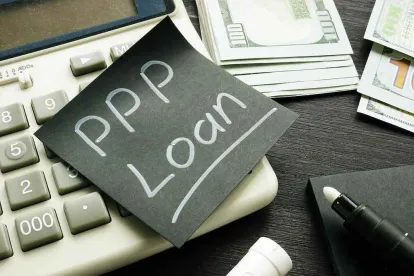This alert updates, clarifies and supersedes all prior publications and communications from our firm with respect to the Paycheck Protection Program and other lending programs made available by state and federal governments in response to the COVID-19 pandemic. It is likely that there will be guidance in the coming weeks from the Small Business Administration and other government agencies that may change or enhance this and prior guidance.
On December 27, 2020, President Trump signed into law the Consolidated Appropriations Act, 2021 (the “Updated PPP Act”), which makes changes to the existing Paycheck Protection Program (“PPP”) and allocates an additional $284.45 billion for a second round of PPP loans (the “Second Tranche”). This alert summarizes a number of key provisions of the Updated PPP Act.
-
Additional Eligible Borrowers. Borrowers eligible to receive PPP loans now include housing cooperatives, news organizations and certain 501(c)(6) organizations (including destination marketing organizations). Certain businesses are ineligible for Second Tranche PPP loans, including publicly-traded entities, companies primarily engaged in political or lobbying activities, and businesses with certain specified ties to China or Hong Kong.
-
Expanded Allowable Uses. Allowable uses of PPP loan proceeds now include (i) insurance payments made for the provision of group life, disability, vision and dental insurance benefits within payroll costs, (ii) certain essential covered supplier costs, (iii) certain operating or capital expenditures related to worker protection, (iv) certain covered operations expenditures, and (v) costs related to property damage, vandalism or looting due to public disturbances that occurred during 2020.
-
Eligibility for Second Tranche Loans. In order to be eligible for a Second Tranche PPP loan, a borrower generally must (i) have no more than 300 employees, (ii) have been operational on February 15, 2020, and (iii) demonstrate a 25% reduction from gross receipts during the comparable quarter in 2019 (or 2020, as applicable).
-
Loan Amount. The maximum loan amount available to a Second Tranche borrower is $2 million (reduced from the $10 million cap for a borrower under the original PPP loan program). A Second Tranche PPP loan borrower may receive an amount up to 2.5 times its average total monthly payroll during (i) the one-year period prior to the date the loan is made or (ii) calendar year 2019, except that the 2.5 multiplier is increased to 3.5 for restaurants and hotels.
-
Covered Period. A borrower may now select a covered period during which to spend the PPP loan proceeds that is no less than 8 weeks and no greater than 24 weeks.
-
Loan Forgiveness. A borrower that receives $150,000 or less in PPP loan proceeds may now apply for forgiveness by submitting a one-page certification to its PPP lender. A borrower that receives a PPP loan of more than $150,000 must provide the same documentation required for loan forgiveness under the original PPP loan program.
-
Tax Considerations.
-
The forgiveness of PPP loans will not be included as taxable income. Expenses paid with the proceeds of a PPP loan that are forgiven are now tax-deductible. This reverses previous guidance from the Treasury and IRS, which did not allow deductions for such expenses.
-
The Updated PPP Act provides that to the extent that any PPP loans made to a partnership or S corporation are forgiven, such amounts are treated as tax-exempt income which increases the outside tax basis of a partner’s interest in the partnership and an S corporation’s shareholder’s tax basis in the shareholder’s stock.
-
A business that received a PPP loan prior to the enactment of the Updated PPP Act was not eligible for the employee retention payroll tax credit as enacted under the CARES Act. The Updated PPP Act revises the existing rules by now allowing PPP borrowers to claim such employee retention payroll tax credit which is also extended with regard to wages paid through June 30, 2021. However, wages used in claiming the employee retention payroll tax credit are excluded from payroll costs which are eligible to be forgiven if paid from PPP loan proceeds.
-
-
PPP Borrowers in Bankruptcy. In a small business bankruptcy case, a debtor in possession or a trustee that is authorized to operate the business of the debtor may now obtain a PPP loan. These loans will be entitled to “superpriority” administrative expense claim status in the bankruptcy case. To the extent that all or any part of the loan is not forgiven, a plan of reorganization may be confirmed only if the plan provides for payments on account of such claim when due under the terms of the loan giving rise to such claim.
-
Audit. The Updated PPP Act appropriates $50 million to the SBA for auditing and fraud mitigation purposes.
-
EIDL Advance Deduction. The amount of a borrower’s PPP loan that is forgiven will no longer be reduced by the amount of any EIDL advance received by such borrower.
-
Returned Loans. If a borrower returned a portion of, or did not accept the maximum amount of, the original PPP loan for which it was eligible, such borrower may apply to receive up to the maximum amount that was available to it so long as such borrower had not received forgiveness of its loan as of the date the Updated PPP Act was enacted.







 />i
/>i
